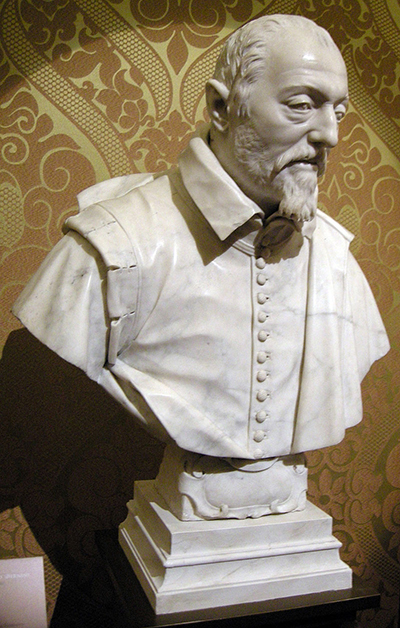Italian artist Gian Lorenzo Bernini created the sculptural Bust of Antonio Cepparelli around 1622. The marble portrait is a detailed and unique reflection of Antonio Cepparelli, sculpted 10 years after the portrait of Antonio Coppola.
German writer Wolfgang von Goethe stated that looking at the sculpture is like looking in the mirror. The museum in the San Giovanni dei Fiorentini Church houses the masterpiece along with other works executed by Bernini. The Bust of Antonio Cepparelli is executed in marble which marks the high social status of Cepparelli. He was a wealthy Florentine who lived in Rome. The nobleman himself commissioned the masterpiece. It was made during the same period when Bernini began working on the Apollo and Dahne sculpture. The intense and impactful representation of the gentleman suggests wisdom and acute interpretation of his time's reality.
Bernini subtly indicates the interior battle of the character through the carefully detailed facial features. Cepparelli appears saddened and distressed by the society's dynamics. The opposition between his powerful character and expression is present throughout the portrait. The weight of Cepparelli's body is slightly leaning forward as if he's seeking answers to complex situations. The bearded nobleman is constantly trying to decipher his inner conflict. The posture creates a dramatic effect which gives mysterious life to the art in stone.
Bernini combines static and dynamic elements in the Bust of Antonio Cepparelli through an acute representation of the nobleman's apparent silence and interior battle. The facial features are signs of society's marks on the gentleman's personality. He's restless and strong, maintaining a solid stance against the realities of that time.
Bernini uses multiple layers to indicate the folding of the garment which suggests an overlap of the nobleman's actions. He's physically still, yet moving. Bernini uses unique details such as the fixed distance between the garment's buttons to create symmetry and indicate the nobleman's rationality and logic. Although he feels overwhelmed, he sits tall and steady. The character's remarkable traits are present in all the bust's details and complex features. The marble statue is a clear indication of grandeur, wealth and sophistication. It comprises simple linear art with complex details such as the precise execution of facial traits, the accurately defined hair and symmetry of the garment.
The Bust of Antonio Cepparelli is a turning point for Bernini's artwork. He uses superior marble to depict the portrait of a Florentine nobleman in constant pursuit of solutions to contemporary social problems. Although peaceful and serene in appearance, the artist breathes intense dynamics and conflict into stone. The portrait is an exquisite mastery of Bernini and demonstrates his artistic maturity. The cardinal's deep thought and concentration are indications of the artists' extraordinary refinement and qualities. He exceeds the standards of formal portraiture through remarkable and accurate naturalistic elements.




